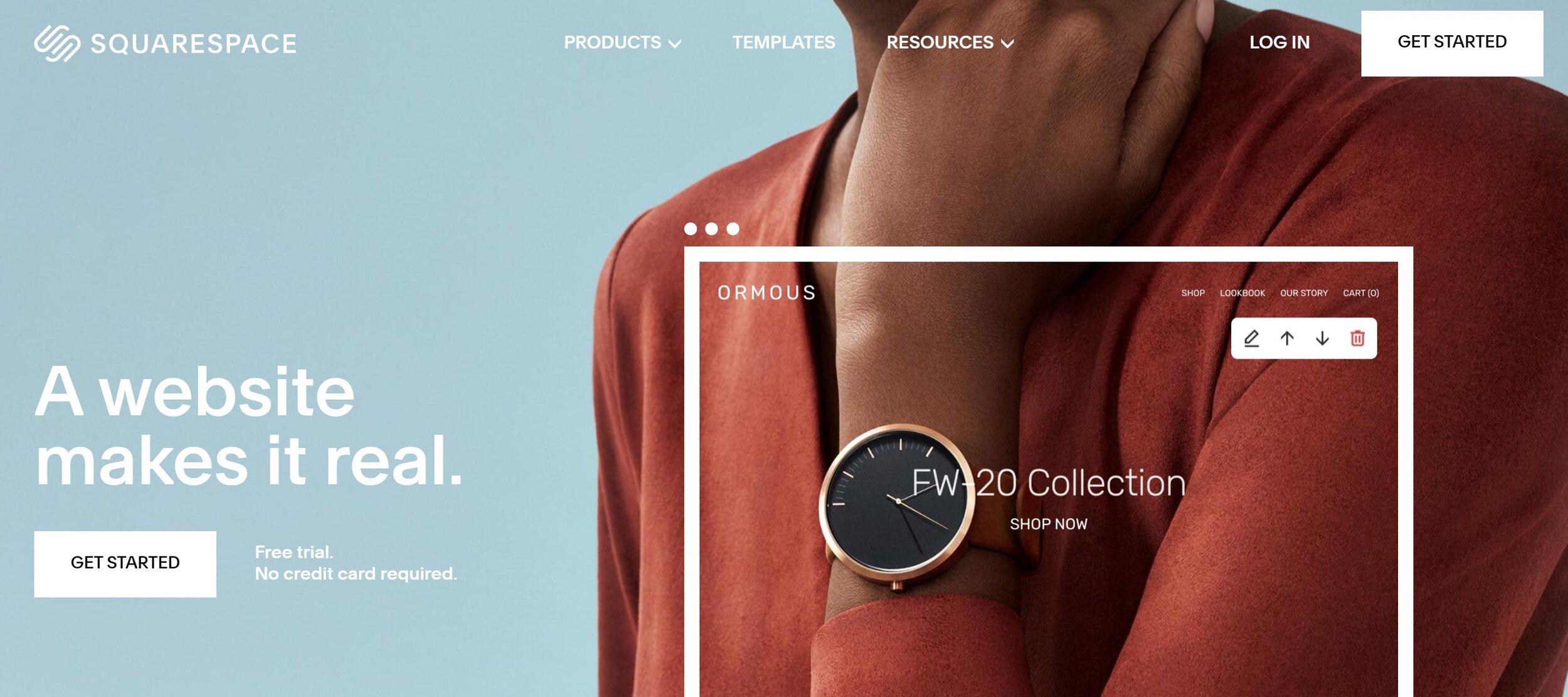Look, I hate acronyms with a burning hatred visible from space. But sometimes the little feckers can come in handy.
That’s the case when it comes to your unique value proposition, aka your UVP.
Your UVP sums up why someone should choose you over all the other consultants out there doing the same thing.
Having a good UVP is as important as having a memorable elevator pitch.
When someone hits your website or your LinkedIn profile, you’ve got a fraction of a second to establish yourself as relevant and valuable to them.
That’s where your UVP comes in handy. It’s like a tagline with teeth.
The view from my office in spring. Nothing to do with UVPs, but nice huh?
Sometimes in summer I go sit on the deck. That’s also rather lovely.
Your UVP vs your USPs
Before we get started, we’ve got to dive into an acronym salad, and sort out the difference between your UVP and your USPs.
So, your UVP is your Unique Value proposition.
It’s the heart of your brand.
It drives strategy.
It encapsulates the value that you add to your clients’ lives.
It’s a promise.
Your USP is your Unique Selling Proposition
You can have more than one USP.
They’re features or benefits that differentiate you from your competitors.
They may change over time as your services and product evolve.
They should support your UVP.
You’ve probably also heard people talking about positioning statements and elevator pitches. These are very similar, with the critical difference that one is designed to be read, and the other is designed to be delivered as a short answer to the question; “What do you do?”
Both cover off:
What you do.
Who you do it for.
Your UVP (why people choose you).
Both are handy tools, but in order to craft them, you must first have a compelling value proposition.
So, let’s craft you a kick arse UVP, right here, right now.
Get yourself a cup of tea, grab your fav pen and a notepad and we’ll get cranking.
Crumpet is optional in this exercise, but my high-level strategic recommendation is crumpet …. mmmm.
What do you deliver of value?
Take five minutes and list all the valuable results you deliver for your clients. Don’t list your services. List the outcomes you deliver and the benefits that your clients enjoy from working with you.
If you’re struggling to differentiate a service from an outcome, just keep asking “so what?” until you end up at a valuable result.
Let’s look at an example.
JO GRAMS, REAL ESTATE AGENT
Jo Gram’s isn’t your average real estate agent. She turned to real estate after a career as a professional photographer and an interior designer.
So what? Why does this matter if you’re selling your house?
Because she uses her interior design skills to make houses for sale look amazing, and her photography skills to ensure it looks fab in the pictures.
Great. That’s lovely. So what?
Because the better your property looks and feels, the more you’ll get for it. You’ll make more money selling with Jo, than you will with a real estate agent who doesn’t have her special skills.
Another example. I’m going to get introspective with this one.
LIZZIE DAVIDSON, COPYWRITER
I’m good at delivering complex ideas in a simple, engaging manner.
So what? Why should you care?
Because clear messaging makes it easier for your potential customers to understand how you can help them.
Great. So what?
Explaining your services in simple terms increases sales because it’s easier for your customers to see how you can help them.
Boom. That’s the valuable outcome right there.
Your turn. Make a list of the outcomes you deliver …
Now you’ve just proved that you do many amazing things for your clients.
If we listed them all, we’d be here all night and we sure wouldn’t be succinct.
So, we’re going to pick the most valuable results you deliver to your customers, because they’ll be the most persuasive.
One day my partner was chased down the road by a woman who wanted to know where he’d got this bag. Now I use it to store clothes pegs.
These plants are remarkably tolerant of neglect. However you cannot go to Scotland for a month and not water them. They have limits.
Let’s rank those suckers
Now you’re going to rank the benefits you deliver.
You’re going to score them by three criteria:
Importance to your client, where 0 = not valuable at all and 2 = very valuable.
Differentiation from your competition, where 0 = no difference and 2 = unique.
Proof that you can deliver these results, where 0 = no proof and 2 = compelling evidence.
When you’re ranking importance to your client, it can be useful to consider the results you deliver in the context of the drivers that make people buy.
Business growth consultant James Kemp defines four sales triggers for consultants:
You make people money.
You save people time and money.
You keep people out of jail.
You help people live a better life.
These can be boiled down to two key drivers.
People buy to
Alleviate pain.
Gain pleasure.
Of those two, it is generally considered that avoiding pain is a more powerful driver than gaining pleasure.
Ask yourself, what positive and negative drivers trigger your clients to buy your services and products?
Once you’ve ranked your outcomes by the three criteria above, multiply the three scores together for each outcome and order the benefits you deliver from most to least valuable.
I borrowed this ranking methodology from marketing consultant Peter Sandeen. If you head to his site you can snag his method for working out the most valuable outcomes you deliver for free. Thanks Peter.
Peter’s take is that you can only hang your hat on outcomes that score an eight. These are benefits that are extra valuable to your clients, aren’t being delivered by your competition, PLUS you’ve strong proof that you can deliver the goods.
If you’re not delivering outcomes that score eight, ask yourself how you can elevate your top scoring outcomes to be an eight? Can you do some customer research to make your offering more valuable (yes you can, and here’s a simple how to guide). Can you differentiate yourself more from your competitors in this area? Do you need more social proof in the form of testimonials, case studies, and client logos?
Now that you’ve got a feel for where the biggest value you deliver lies, we’re going to look at ways to present your value proposition.
As you can tell., I’ve abandoned all pretence of sharing relevant images in this article. Here’s a Christmas berry haul from the garden.
And this is what we did with the redcurrents and blackcurrents. The tartness works really well with the creamy unctuous pav.
Ways to frame up your value proposition
A strong value proposition quantifies the measurable outcomes a defined target market can expect from working with you.
They usually touch on three things:
How you solve problems / improve lives.
The benefits you deliver.
Why you’re better than your competitors.
I’ve written numerous value propositions while working on brand strategies. The methodology I use is simple
(Business name) is the (sort of business you are) for (people you serve) with (problem you solve), because (business name) delivers (the measurable unique benefit that you deliver).
For example:
I am the conversion copywriter for consultants, freelancers and creative service providers with underperforming websites, because I deliver unique story driven persuasive web copy that grows their traffic and generates leads.
Then make sure you substantiate your claim with plenty of social proof in the form of testimonials, client logos, and case studies. Job done.
I’m sure I nicked this formula from someone, somewhere, sometime, but I’m afraid my chicanery is lost in the mists of time. If it was you, please email me and I’ll credit you forthwith.
So, this is a solid formula for developing your value proposition. It’s served me well, and I like it.
But I know that there are a whole bunch of other value proposition formulas out there. So, I thought, wouldn’t it be fun to go pull a few examples together as a useful guide for you, oh gentle reader?
Naturally, someone else (namely digital strategist and assistant professor at the University of Oslo Tor Gronsund) had that brilliant idea already.
So, then I thought, well how about I collect all the value proposition templates I can find, take them for a test drive using my own value proposition (because between you and me, I totally haven’t nailed it) and see which ones tickle my pickle.
So that is what I did. And these are my experiments.
I’m indebted to Tor Gronsund for doing the hard yards for me to riff on here. I’ve borrowed his titles and descriptions of the templates. All erroneous interpretations of these strategies are my own.
Disclaimer. This next section is massively self-indulgent because I’m rehashing my own value proposition 12 times. Feel free to skip to my conclusion.
Looking across the Lyttelton harbour from the track to the Sign of the Packhorse. It’s really quite sublime.
1.Geoff Moore’s Value Positioning Statement
Template
For [target customer] who [statement of the need or opportunity], our [product/service name] is [product category] that [statement of benefit].
My example
For consultants with under-performing websites, I create persuasive web content that grows your traffic and brings you more leads from the right people.
2.Steve Blank’s XYZ
Template
We help [X] to [Y] by [Z].
My example
I help consultants grow traffic and attract more leads by making your website more personal and persuasive.
3.Vlaskovits and Cooper’s Customer-Problem-Solution
Template
Customer: [who your target audience is]
Problem: [what problem you’re solving for the customer]
Solution: [what is your solution to the problem]
My example
Customer: My best customers are consultants, freelancers and creative service professionals.
Problem: Who have underperforming websites.
Solution: Persuasive, personal web content grows your traffic and attracts leads.
4.Dave McClure’s Elevator Ride
Template
Short, simple, memorable; what, how, why.
3 keywords or phrases
KISS (no expert jargon)
My example
Grow your business with persuasive web copy that creates personal connection.
5.David Cowan's Pitchcraft
Template
Highlight the enormity of the problem you are tackling.
Tell the audience up front what your company sells.
Distill the differentiation down to one, easy-to-comprehend sentence.
Establish credibility by sharing the pedigree of the entrepreneurs, customers, or the investors.
My example
Hands up if you’re a consultant, a freelancer or a creative service provider and you’re exhausted from the constant new business hustle.
I write persuasive web copy that hustles for you.
I use your story to craft high-converting content that grows website traffic and captures leads, using over a decade of experience writing copy for businesses in the US, Australia and New Zealand.
6.Eric Sink's Value Positioning
Template
Superlative ("why choose this product").
Label ("what is this product").
Qualifiers ("who should choose this product").
My example
The magnetic copy solution for consultants with under-performing websites.
7.Clay Christensen’s Jobs-to-be-done
Template
Action verb: _________
Object of action: _________
Contextual identifier: _________.
My examples (couldn’t decide which was working here, TBH they’re all a bit meh)
Grow leads from your website.
Grow your email list with killer web content.
Make more money with better web content.
Make more money with persuasive web content.
8.Simon Sinek’s WHY
Template
Why: ___________
How: ___________
What: ___________
My example
Why: I believe that people buy personal connection, story sells, and business doesn’t have to be boring.
How: I help my clients establish trust and rapport with potential clients by helping them express their personal journey, their expertise, and their process.
What: I do that through writing persuasive web content that grows traffic and attracts leads.
9.The Minto Pyramid aka SCQA
Template
Situation - describe what is the current situation
Complication - describe the issue in the situation
Question - describe the question in response to the issue
Answer - suggest answer to ease out or mitigate the issue
My example
As a consultant, it can be tough to find new clients and differentiate yourself from your competition.
You’re exhausted from the continual hustle of growing your business.
Wouldn’t it be great to have a regular stream of enquiries from the right people?
I can help you grow your email list and nurture potential clients with persuasive web content that sells while you sleep.
10.Guy Kawasaki’s verb-application-differentiator approach
Template
Verb; application; differentiator.
My examples
Share your story to grow traffic and leads.
After doing 10 of these bad boys I was on a roll. So, I made a couple more templates up, based on business value propositions that I liked.
11. The Triple Banger
Template
Short and satisfying. Bang. Bang. Bang.
3 action words that describe your solution.
My example
Share. Connect. Grow.
12. The Double Scoop
Template
Two short statements.
How you deliver. What you get.
Start both statements with action verbs.
My example
Share your story. Grow your business.
Sometimes the cloud rolls up the harbour and brings a great white sea to our doorstep.
So, is there a clear winning value proposition template?
Well not really. There are some I don’t like.
I’m not keen on Geoff Moore’s Value Positioning Statement or Vlaskovits and Cooper’s Customer-Problem-Solution. Both feel ponderous. The fault may / will lie with my execution.
Steve Blank’s XYZ and Dave McClure’s Elevator Ride are similar succinct methodologies, yet Dave’s ride feels more dynamic.
Eric Sink's Value Positioning feels suspect to me because I’m Scottish and repressed and I was taught that superlatives are earned not self-awarded. But in all seriousness, the place for superlatives is your testimonials, UNLESS you really are the best and you can prove it with data.
The old Triple Banger, despite its pleasing balance and ubiquity, or perhaps because of its ubiquity, is too banal to be ownable.
I really want to like Clay Christensen’s Jobs-to-be-done because of its pleasing simplicity, but the results are blah. Almost certainly mea culpa.
Which leaves us with David Cowan's Pitchcraft, Simon Sinek’s WHY, and The Minto Pyramid.
I like all of these. They all tell a story, and stories are more compelling and more memorable. I’m hard pushed to pick a favourite. Simon Sinek’s probably takes the edge by a whisker because it’s more emotive. But I’ll probably test all these value propositions to see which resonates best.
The catch? None of them are succinct.
Of the short formats, Dave’s Elevator Ride is the business. I also like the concise impact of the Double Scoop with its active verbs. It feels punchy and memorable. But it hasn’t been tested enough in different situations to see if it will deliver the goods consistently.
Do I like any of these better than my old faithful value proposition format?
Yeah I do. But not to the extent that I’ll be kicking my old girl to the curb. I might be a bit more polyamorous in future though.
Look! It’s a relevant image showing a UVP. Wonders will never cease. Few more below too.
Examples of great value propositions
Of course, another way to write your value proposition is simply to go gather a bunch of great examples from businesses who are crushing it and be liberally inspired by their brilliance.
Here a few to start with.
Xero: Accounting software for small business that works anywhere you do
Unbounce: Convert more
Tinder: Match. Chat. Date.
Banqer: Financial Education that inspires students to be curious, creative, and confident with money
Bitly: Create Click-Worthy Links
Zoom: Keeping you connected wherever you are
My Food Bag: Dinner made easy
Digit: Save money without thinking about it
Duck Duck Go: Privacy, simplified.
Tend: See a doctor on your phone from anywhere
Squarespace: A website makes it real
Uber eats: Your favourite food, delivered with Uber
HubSpot Marketing: Stop interrupting. Start connecting. (an oldie, but a goodie)
Why your UVP ain’t all it’s cracked up to be
If you did the exercise at the beginning of this article, where you brainstormed all the valuable outcomes you deliver and then ranked them, did you score any eights?
I’m here to tell you that it’s ok if you didn’t.
Sometimes consultants, freelancers and creative service businesses stand out because of their superior experience. Sometimes the outcomes they deliver are so good that they simply outclass their competition. Sometimes the niche they choose is their UVP. Sometimes they’re the budget option.
But many businesses can’t differentiate themselves through their services, their price, or through the outcomes they deliver. These businesses are going to find it tough to create a compelling UVP.
Does this mean that they have no hope of success?
No, it does not.
Because while UVPs are effective ways to communicate what you do, who you do it for, and the value you deliver, they don’t factor in one very important thing.
The power of you.
There may be hundreds (thousands) of people out there doing what you do. But there is only one you. If you’re a consultant, or a service-provider, you, your life story and your unique combination of experiences are your UVP and your USP.
People buy on emotional impulse and then post-rationalise their purchase.
Which is a fancy way to say that people work with you because they like you and you make them feel good.
I’m not saying you shouldn’t invest time, energy and even budget in developing a compelling UVP. Do it. Every moment thinking about the value you offer your clients and how you present that in a compelling way is a moment well spent.
But at the same time, think about how your messaging, your communications and your behaviour are making your clients and prospects feel?
Are you presenting personal benefits that align with their self-interest?
Are you delivering value that helps them progress in their career / life?
How are you making it easy and enjoyable to start working with you? If the ease and pleasure of onboarding you as a supplier, outweighs inertia, you’re in a good place.
Are you gently leveraging the pain in not taking action?
Are you mitigating risk in working with an unknown quantity (you)? What social proof are you offering that you can deliver the goods. What guarantees do you offer if things go pear shaped?
And if that’s all too complex, we can boil that down even more.
Make people feel good and deliver the goods.
It’s really that simple.
Need help crafting your UVP or a juicy tagline that’ll slap people around the chops and get ‘em to sit up and take notice? Email me. I got you.
I also write website copy. And image captions. Did you know that image captions are the second most read copy on any page, other than the headline?


















